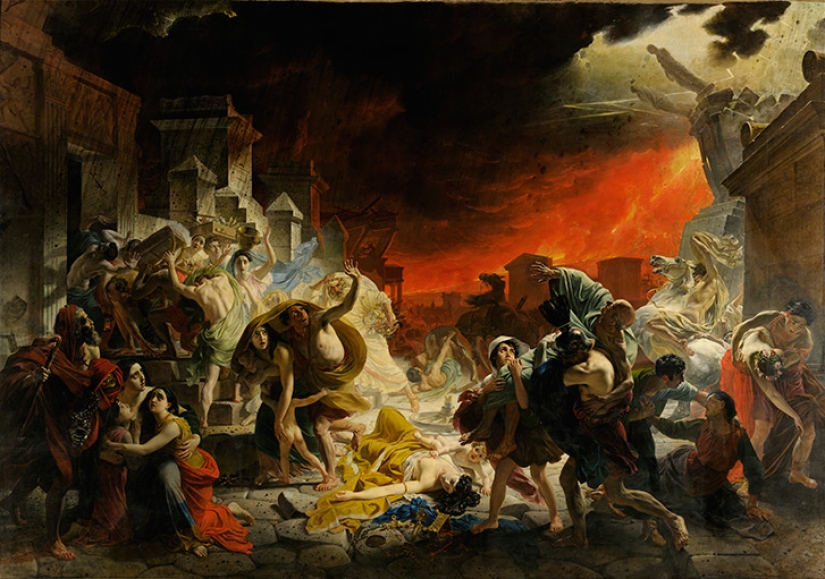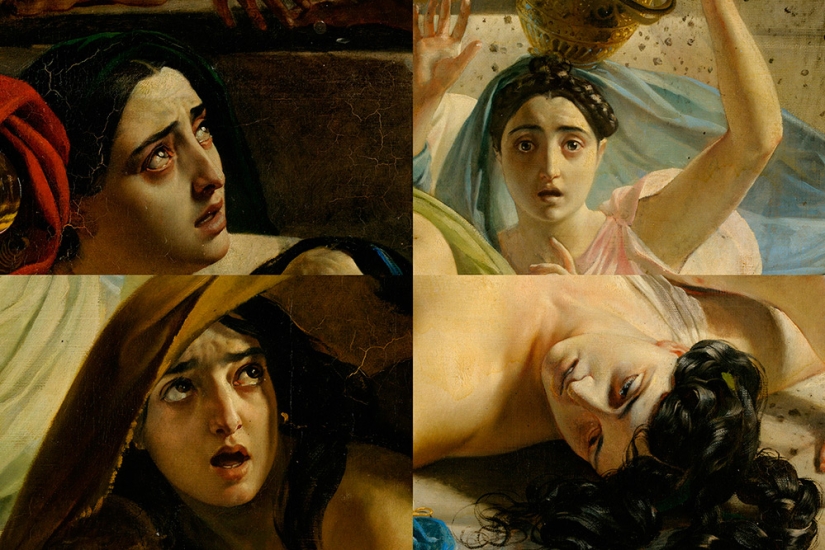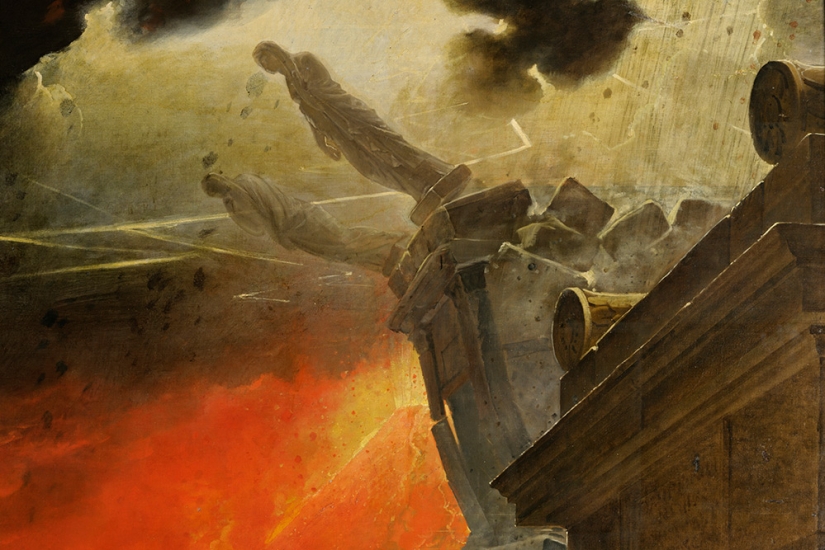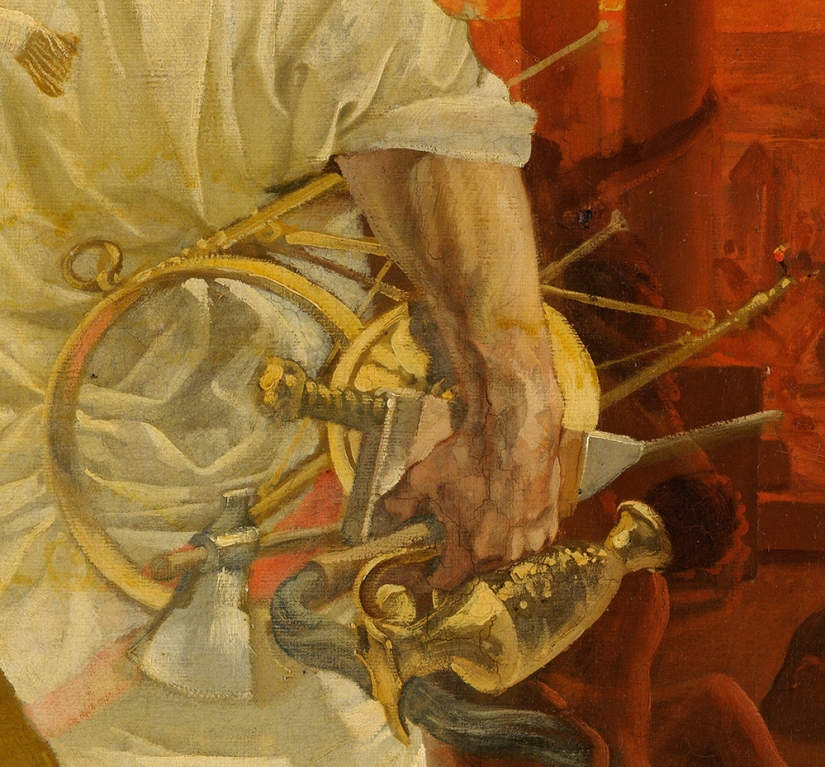Clones of the beloved: entertaining facts about the most famous painting by Bryullov
Categories: History
By Pictolic https://pictolic.com/article/clones-of-the-beloved-entertaining-facts-about-the-most-famous-painting-by-bryullov.htmlKarl Bryullov lived in Italy for more than four years before reaching Pompeii in 1827. At that time, he was looking for a subject for a large picture on a historical theme. What he saw amazed the artist. It took him six years to collect material and write an epic canvas with an area of almost 30 m2. In the picture, people of different sex and age, occupation and faith, caught in a catastrophe, are rushing about. However, in the motley crowd you can see four identical faces ...
In the same 1827, Bryullov met the woman of his life - Countess Yulia Samoilova. After parting ways with her husband, a young aristocrat, a former lady-in-waiting who loved a bohemian lifestyle, moved to Italy, where morals are freer. Both the countess and the artist had a reputation for heartthrobs. Their relationship remained free, but long, and friendship continued until Bryullov's death. “Nothing was done according to the rules between me and Karl,” Samoilova later wrote to his brother Alexander.
(Total 19 images)


Karl Bryullov, "Portrait of Countess Yulia Pavlovna Samoilova, leaving the ball with her adopted daughter Amazilia Pacini", 1839-1840, fragment.
Julia, with her Mediterranean appearance (there were rumors that the woman's father was the Italian Count Litta, her mother's stepfather) was an ideal for Bryullov, moreover, as if created for an ancient plot. The artist painted several portraits of the countess and "gave" her face to the four heroines of the painting, which became his most famous creation. In The Last Day of Pompeii, Bryullov wanted to show the beauty of a person even in a desperate situation, and Yulia Samoilova was for him a perfect example of this beauty in the real world.

The researcher Erich Hollerbach noted that the heroines of The Last Day of Pompeii, similar to each other, despite social differences, look like representatives of one large family, as if the disaster brought all the townspeople closer and equalized.

“I took this scenery from nature, without retreating at all and without adding, standing with my back to the city gates in order to see part of Vesuvius as the main reason,” Bryullov explained in a letter to his brother the choice of scene. This is already a suburb, the so-called Road of the Tombs, leading from the Herculaneum gates of Pompeii to Naples. Here were the tombs of noble citizens and temples. The artist sketched the location of the buildings during the excavations.

According to Bryullov, he saw one female and two children's skeletons, covered in these positions with volcanic ash, at excavations. The artist could associate a mother with two daughters with Yulia Samoilova, who, having no children of her own, took up two girls, relatives of friends, to raise. By the way, the father of the youngest of them, the composer Giovanni Pacini, wrote the opera The Last Day of Pompeii in 1825, and the fashionable production became one of the sources of inspiration for Bryullov.

Christian priest. In the first century of Christianity, a minister of the new faith could have been in Pompeii; in the picture he is easily recognizable by the cross, liturgical utensils - a censer and a chalice - and a scroll with a sacred text. The wearing of pectoral and pectoral crosses in the 1st century has not been confirmed archaeologically.

Pagan priest. The status of the character is indicated by cult objects in his hands and a headband - infula. Bryullov's contemporaries reproached him for not bringing to the fore the opposition of Christianity to paganism, but the artist did not have such a goal.

Items of pagan worship. The tripod was intended for incense to the gods, ritual knives and axes - for slaughtering sacrificial cattle, a vessel - for washing hands before performing the ceremony.

The clothing of a citizen of the Roman Empire consisted of an undershirt, a tunic, and a toga, a large piece of almond-shaped woolen cloth draped around the body. Toga was a sign of Roman citizenship, the exiled Romans lost the right to wear it. The priests wore a white toga with a purple stripe around the edge - toga praetexta.

Judging by the number of frescoes on the walls of Pompeii, the profession of a painter was in demand in the city. As an ancient painter, running next to a girl with the appearance of Countess Julia, Bryullov portrayed himself - this was often done by Renaissance masters, whose work he studied in Italy.

According to the art critic Galina Leontyeva, the pompeian lying on the pavement, fallen from the chariot, symbolizes the death of the ancient world, for which the artists of classicism yearned.

The things that fell out of the box, as well as other objects and decorations in the picture, were copied by Bryullov from bronze and silver mirrors found by archaeologists, keys, lamps filled with olive oil, vases, bracelets and necklaces that belonged to the inhabitants of Pompeii of the 1st century AD.

As conceived by the artist, these are two brothers rescuing a sick old father.

Pliny the Younger with his mother. The ancient Roman prose writer, who witnessed the eruption of Vesuvius, described it in detail in two letters to the historian Tacitus. Bryullov placed the scene with Pliny on the canvas “as an example of childish and maternal love,” despite the fact that the disaster caught the writer and his family in another city - Misena (about 25 km from Vesuvius and about 30 km from Pompeii). Pliny recalled how he and his mother got out of Mizenum at the height of the earthquake, and a cloud of volcanic ash was approaching the city. It was difficult for an elderly woman to escape, and she, not wanting to cause the death of her 18-year-old son, persuaded her to leave her. “I answered that I would be saved only with her; I take her by the arm and make her step up, ”said Pliny. Both survived.

Goldfinch. During a volcanic eruption, birds died on the fly.

According to the ancient Roman tradition, the heads of the newlyweds were decorated with wreaths of flowers. Flammey fell from the girl's head - the traditional cover of the ancient Roman bride from a thin yellow-orange fabric.

Building from the Road of the Tombs, the resting place of Aulus Umbritius Scaurus the Younger. The tombs of the ancient Romans were usually built outside the city on both sides of the road. Scaurus the Younger during his lifetime held the position of duumvir, that is, he was at the head of the city government, and for his merits he was even awarded a monument in the forum. This citizen was the son of a wealthy trader in garum fish sauce (Pompeii was famous for it throughout the empire).

Seismologists, by the nature of the destruction of the buildings depicted in the picture, determined the intensity of the earthquake "according to Bryullov" - eight points.

The eruption, which occurred on August 24-25, 79 AD, destroyed several cities of the Roman Empire, located at the foot of the volcano. Of the 20-30 thousand inhabitants of Pompeii, about two thousand did not escape, judging by the remains found.

Self-portrait of Karl Bryullov, 1848.
1799 - Born in St. Petersburg in the family of academician of ornamental sculpture Pavel Brullo. 1809-1821 - Studied at the Academy of Arts. 1822 - At the expense of the Society for the Encouragement of Artists, he left for Germany and Italy. 1823 - Created "Italian Morning". 1827 - Painted the paintings "Italian afternoon" and "Girl picking grapes in the vicinity of Naples." 1828-1833 - Worked on the canvas "The Last Day of Pompeii". 1832 - He wrote "The Horsewoman", "Bathsheba". 1832-1834 - Worked on the "Portrait of Yulia Pavlovna Samoilova with Giovanina Pacini and a black child." 1835 - Returned to Russia. 1836 - Became a professor at the Academy of Arts. 1839 - Married the daughter of the Riga burgomaster Emilia Timm, but divorced two months later. 1840 - Created "Portrait of Countess Yulia Pavlovna Samoilova, leaving the ball ...". 1849-1850 - Went abroad for treatment. 1852 - Died in the village of Manziana near Rome, buried in the Roman cemetery of Testaccio.
The material was prepared by Natalya Ovchinnikova for the Vokrug Sveta magazine. Published with the permission of the journal. Original publication.
Keywords: Painter | Painting | Art | Pictures | Artists
Post News ArticleRecent articles

Gerard Uferas is one of the most renowned and vibrant contemporary French photographers. His talent is multifaceted, but Uferas is ...

In 1969, a healthy food restaurant opened on the Sunset Strip in Los Angeles-one of the first in the country, and possibly in the ...
Related articles

Colin and Kristin Poole are an amazing creative family. Colin is a world-renowned artist, and his wife Kristin is a wonderful ...

We used to accuse modern art in unprincipled and addiction to pornography. But whether innocent old classic paintings that are dear ...

Beautiful decoration of dishes is no less important than its taste. People first "eat" with their eyes, and only then try what is ...

Colin and Kristin Poole are an amazing creative family. Colin is a world-renowned artist, and his wife Kristin is a wonderful ...